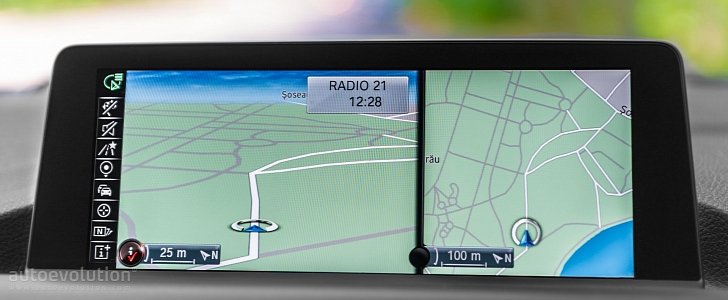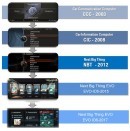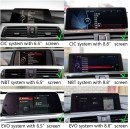Nowadays we’ve grown so accustomed to being guided to our destination that we simply can’t seem to use a map anymore. Use one printed on paper and the world might call you a ‘damn hipster.' However, it’s rather astounding to see how things evolved over the years.
It was all basically an explosion with the biggest breakthroughs happening in the last 5 to 10 years. As a matter of fact, car navigation systems were reduced to monochrome versions back in the early 2000s, at least in BMW’s case.
Sure, GPS guiding and localization has been around for a longer time but it took decades to make the technology accessible and usable by anyone. Today, everyone uses their smartphone for such purposes and navigation apps are so good, automakers have to struggle to keep up with them.
In the case of BMW, you might have a hard time understanding exactly what the differences between the Navigation System Professional and Business are but we’re here to shed some light on the matter.
The systems with the bigger screens (and with better resolutions today) are the Professional ones (Code 609). They have been around since 2002 and have been called Mk III/IV initially. Using BMW High maps, the are based on an old format called CARIN which can be edited today using various software.
They are compatible with VDO Daytona maps that used to be distributed on several CDs. Today they are written on dual-layer DVDs, but you need the latest firmware for your optical unit to be able to use them. The Navigation unit is slotted either in the trunk or under the seat.
Then there’s the CCC Navigation system (available starting with 2003) that uses BMW Professional Maps. These maps come on 3 DVDs and the Navigation unit is located within the dash.
The CIC navigation system (since 2008) uses BMW Premium Maps. These too come on three DVDs, but they can also be stored on a USB stick or the unit’s hard disk. Unfortunately, in order to update these maps, you’re going to need a special FSC code and that will set you back a couple of bucks, depending on whether you purchase it at the dealership or online from other sellers. You can generate your own FSC code, but it’s a bit of a tricky business.
Moving up, we’re getting to the CIC-High (NBT, since 2012) versions that have the same storage option but provide better resolution and more accurate search results. It’s basically a kind of facelift if you will of the standard CIC version.
Last, but not least, we have the latest navigation system which is the NBT2 version. This one uses BMW EVO maps and is in place today, on all new cars rolling off the assembly line. Storage is done when leaving the factory on the on-board memory devices and updates will be sent out automatically via a 4G connection.
Then there’s the Business choice. These are the smaller versions and they have been created only for practicality reasons. There are no other functions included in the Business navigation systems other than guidance.
They are not even using maps but just a GPS module for localization purposes. The early versions used a small monochrome screen and an arrow to show you in which direction to go. Furthermore, the guidance was more acoustic than visual, with spoken instructions being provided by the system.
Sure, GPS guiding and localization has been around for a longer time but it took decades to make the technology accessible and usable by anyone. Today, everyone uses their smartphone for such purposes and navigation apps are so good, automakers have to struggle to keep up with them.
In the case of BMW, you might have a hard time understanding exactly what the differences between the Navigation System Professional and Business are but we’re here to shed some light on the matter.
The systems with the bigger screens (and with better resolutions today) are the Professional ones (Code 609). They have been around since 2002 and have been called Mk III/IV initially. Using BMW High maps, the are based on an old format called CARIN which can be edited today using various software.
They are compatible with VDO Daytona maps that used to be distributed on several CDs. Today they are written on dual-layer DVDs, but you need the latest firmware for your optical unit to be able to use them. The Navigation unit is slotted either in the trunk or under the seat.
Then there’s the CCC Navigation system (available starting with 2003) that uses BMW Professional Maps. These maps come on 3 DVDs and the Navigation unit is located within the dash.
The CIC navigation system (since 2008) uses BMW Premium Maps. These too come on three DVDs, but they can also be stored on a USB stick or the unit’s hard disk. Unfortunately, in order to update these maps, you’re going to need a special FSC code and that will set you back a couple of bucks, depending on whether you purchase it at the dealership or online from other sellers. You can generate your own FSC code, but it’s a bit of a tricky business.
Moving up, we’re getting to the CIC-High (NBT, since 2012) versions that have the same storage option but provide better resolution and more accurate search results. It’s basically a kind of facelift if you will of the standard CIC version.
Last, but not least, we have the latest navigation system which is the NBT2 version. This one uses BMW EVO maps and is in place today, on all new cars rolling off the assembly line. Storage is done when leaving the factory on the on-board memory devices and updates will be sent out automatically via a 4G connection.
Then there’s the Business choice. These are the smaller versions and they have been created only for practicality reasons. There are no other functions included in the Business navigation systems other than guidance.
They are not even using maps but just a GPS module for localization purposes. The early versions used a small monochrome screen and an arrow to show you in which direction to go. Furthermore, the guidance was more acoustic than visual, with spoken instructions being provided by the system.



